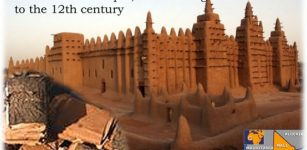Kommagene Civilization And The Ancient City Of Perge
A. Sutherland - AncientPages.com - The ancient city of Perge was one of the centers of the Kommagene civilization.
Located in the southern province of Antalya, between the capital of the Kommagene Kingdom, Samosata (today Samsat), and Melitene (today Malatya), Perge is mentioned in several Roman resources for its beautiful water and served as a resting place for travelers, caravans, and armies passing through the region.
Perge is home to some 200 stone tombs and a still-functional fountain.
Archaeological excavations have continued for the last three years in the area and revealed 13 rare sculptures, including the Roman emperor Caracalla and several Greek gods and goddesses.
One of them is moon goddess Selene, a horse sculpture, and goddess Tykhe ('Fortuna' in Latin), the main goddess of Perge, who governed the fortune and prosperity of a city.
Kings of the Kommagene Dynasty ruled Adiyaman Province and its vicinity from 80 BC to 72 AD. This Kingdom, whose capital was Samosata, was founded around 80 BC by Mithridates 1, the father of Antiochos 1.
The Kingdom's independence ended with its defeat by Roman legions in the last Kommagene wars, and it became part of the Roman Province of Syria.
The city of Perge - the focus of excavation - was a resting place for travelers, caravans, and armies. It is home to some 200 stone tombs and a still-functional fountain.
The sculpture symbolized recovery from illness for the ancient Greeks and was first unearthed in 1981 in one of the oldest excavation areas, the ancient city of Perge.
After more than 30 years, the head of Telesphoros, dated to the 2nd century AD, was finally found.
The sculpture, made up of one foot, two pieces of a body (symbolizing Asclepius), and a child's body (representing Telesphoros), is now at the Antalya Museum.
Perge was an important city for Christians of Perge who had worshipped the mother goddess Artemis. St. Paul and Barnabas visited the city, and wealthy benefactors like Magna Plancia had several memorials built here.
The ancient city of Perge has already revealed more than 363 historical and cultural artifacts and stone tombs.
Future excavations will contribute with other traces of the Kommagene civilization, described by Strabo as a small but fertile country between the southeastern Taurus and the Euphrates in Anatolia.
Until the coming of the Romans, Commagene was the most prosperous kingdom in the arid southeast region. Its capital, Samosata (Samsat), near Adiyaman, named after Samos I (3rd c. BC.), commanded a strategic crossing over the Euphrates.
It enabled Ptolemaeus, the local ruler, to take advantage in 163 BC of the power struggle between Alexander's successors to make himself king of a small dominion, gradually becoming an independent state.
Written by A. Sutherland - AncientPages.com Staff Writer
Updated on January 6, 2024
Copyright © AncientPages.com All rights reserved. This material may not be published, broadcast, rewritten or redistributed in whole or part without the express written permission of AncientPages.com
Expand for referencesMore From Ancient Pages
-
 Migration Of Early Humans Out Of Africa Began Thousands Of Years Earlier Than Previously Thought
Archaeology | Dec 18, 2017
Migration Of Early Humans Out Of Africa Began Thousands Of Years Earlier Than Previously Thought
Archaeology | Dec 18, 2017 -
 Sami God Horagalles Who Ruled Over Rain, Fire And Thunder Hated Evil Spirits
Featured Stories | Feb 11, 2024
Sami God Horagalles Who Ruled Over Rain, Fire And Thunder Hated Evil Spirits
Featured Stories | Feb 11, 2024 -
 Negev Desert’s Ancient Site Tells Story About Humans, Neanderthals Coexistence
Archaeology | Jun 19, 2021
Negev Desert’s Ancient Site Tells Story About Humans, Neanderthals Coexistence
Archaeology | Jun 19, 2021 -
 Unusual 7,000-Year-Old Jar Decorated With A Horned Face Found In Poland
Archaeology | Sep 3, 2020
Unusual 7,000-Year-Old Jar Decorated With A Horned Face Found In Poland
Archaeology | Sep 3, 2020 -
 Mysterious Abaj Takalik Of Guatemala And Intriguing Relationship Between Olmec and Maya
Civilizations | Mar 16, 2020
Mysterious Abaj Takalik Of Guatemala And Intriguing Relationship Between Olmec and Maya
Civilizations | Mar 16, 2020 -
 Secrets Of Ancient Mound Builders In Louisiana Revealed
Archaeology | May 23, 2018
Secrets Of Ancient Mound Builders In Louisiana Revealed
Archaeology | May 23, 2018 -
 On This Day In History: Canute Lavard Was Murdered By His Cousin, Magnus I Of Sweden – On Jan 7, 1131
Historical Figures | Jan 7, 2017
On This Day In History: Canute Lavard Was Murdered By His Cousin, Magnus I Of Sweden – On Jan 7, 1131
Historical Figures | Jan 7, 2017 -
 Enigma Of Lycurgus Of Sparta – Great Reformer And His Foundation Of A Warlike Superior State
Featured Stories | Jan 9, 2023
Enigma Of Lycurgus Of Sparta – Great Reformer And His Foundation Of A Warlike Superior State
Featured Stories | Jan 9, 2023 -
 Roman Consuls Seized Power Through Intimidation, Bribery And Show Business
Ancient History Facts | Mar 4, 2025
Roman Consuls Seized Power Through Intimidation, Bribery And Show Business
Ancient History Facts | Mar 4, 2025 -
 Dreamcatcher: Powerful Protective Amulet Of North American Indian People
Ancient Traditions And Customs | Mar 20, 2020
Dreamcatcher: Powerful Protective Amulet Of North American Indian People
Ancient Traditions And Customs | Mar 20, 2020 -
 On This Day In History: Naval Battle Of Rennell Island Fought Off Guadalcanal – On Jan 29, 1943
News | Jan 29, 2017
On This Day In History: Naval Battle Of Rennell Island Fought Off Guadalcanal – On Jan 29, 1943
News | Jan 29, 2017 -
 Graeae: Three Sisters Of Fate Who Shared One Eye And Tooth In Greek Mythology
Featured Stories | Jun 8, 2016
Graeae: Three Sisters Of Fate Who Shared One Eye And Tooth In Greek Mythology
Featured Stories | Jun 8, 2016 -
 Mysterious Lost Kingdom Of Urartu And Its Enigmatic History
Featured Stories | Jun 22, 2014
Mysterious Lost Kingdom Of Urartu And Its Enigmatic History
Featured Stories | Jun 22, 2014 -
 ‘Euros Of Prehistory’ Were Currency Of People From The Early Bronze Age Of Central Europe
Artifacts | Jan 21, 2021
‘Euros Of Prehistory’ Were Currency Of People From The Early Bronze Age Of Central Europe
Artifacts | Jan 21, 2021 -
 Gigantic Unfinished Stone Structures Cut With Amazing Stone-Working Techniques
Civilizations | Sep 21, 2015
Gigantic Unfinished Stone Structures Cut With Amazing Stone-Working Techniques
Civilizations | Sep 21, 2015 -
 Ancient Manuscripts Of Mythical City Of Timbuktu
Artifacts | Jun 12, 2014
Ancient Manuscripts Of Mythical City Of Timbuktu
Artifacts | Jun 12, 2014 -
 Graves Of Celtic Princes Reveal How Powerful Women Were In Pre-Roman Germany
Archaeology | Jun 4, 2024
Graves Of Celtic Princes Reveal How Powerful Women Were In Pre-Roman Germany
Archaeology | Jun 4, 2024 -
 6,000-Year-Old Bizarre, Mouthless ‘Alien’ Mask Unearthed In “The Salt Pit” Settlement In Northeast Bulgaria
Archaeology | Nov 20, 2020
6,000-Year-Old Bizarre, Mouthless ‘Alien’ Mask Unearthed In “The Salt Pit” Settlement In Northeast Bulgaria
Archaeology | Nov 20, 2020 -
 Mysterious Utah: Prehistoric Ancient Petroglyphs Of Santa Clara River Reserve
Civilizations | Oct 2, 2018
Mysterious Utah: Prehistoric Ancient Petroglyphs Of Santa Clara River Reserve
Civilizations | Oct 2, 2018 -
 Skegriedösen (Skegrie Dolmen) – 5,000-Year-Old Stone Chamber Tomb In Southern Sweden
Featured Stories | Feb 11, 2023
Skegriedösen (Skegrie Dolmen) – 5,000-Year-Old Stone Chamber Tomb In Southern Sweden
Featured Stories | Feb 11, 2023




